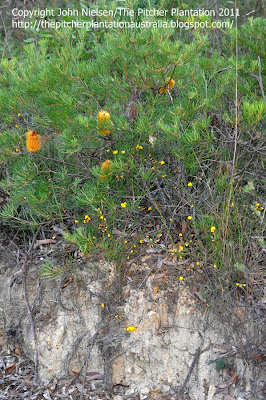Amazing as this plant is, it has a bad reputation for being tough to grow, beeing liable to die with little or no warning. The reason why these plants do this is now becoming known - they hate wet, stagnant roots. This more or less rules out using the tray method for watering the plant, but makes it difficult to provide consistent moisture to the roots. There is, however, an unbelievably easy way to grow this species.

Yep, that's it - self watering pots! The pots I use are the 27 cm square troughs sold by Bunnings. These pots work by capillary watering - they have a reservoir of water in the base and a false pot bottom that allows ample water to be drawn up through the soil to the roots as it is needed. It does not allow the roots to stay so wet that they rot. This system also allows plenty of air to penetrate the soil, while the size of the pot moderates soil temperature. All you need to do is keep some water in the reservoir to keep the soil consistently moist.

These pots have allowed me to grow Cephalotus successfully here in Canberra, including temperature extremes between -6*C in winter and 40*C in summer. I don't let frost form on them, though, and my plants are put in an unheated but frost-free greenhouse for the winter. Except for the self watering pots, my plants are grown under identical conditions to my Sarracenia - full sun and a soil mix of equal parts peat, sand and coarse perlite. The sand in the photos above is simply top dressing to stop the peat splashing over the plants and to keep the top of the pots as free from as much competition as possible. The only plants I let grow with them are pygmy Drosera, most of which are now gemmae waiting to sprout. I propogate all my plants from leaf pullings. As Cephalotus hate root disturbance, I strike all cuttings in cardboard or peat pots that break down in the soil and can be planted straight into a new pot without annoying the roots.
I grow two clones of Cephalotus at the moment, with another clone striking from leaf pullings. They can be slow to establish even in the self-watering pots, but once they are, they grow quite quickly. As evidence, the above plant has not put on much growth since I put it in the self watering pot last year. It is a Cephalotus that produces burgundy to almost black pitchers, so this might have something to do with its poor growth to date. The other, more green, clone has grown much more quickly.









































